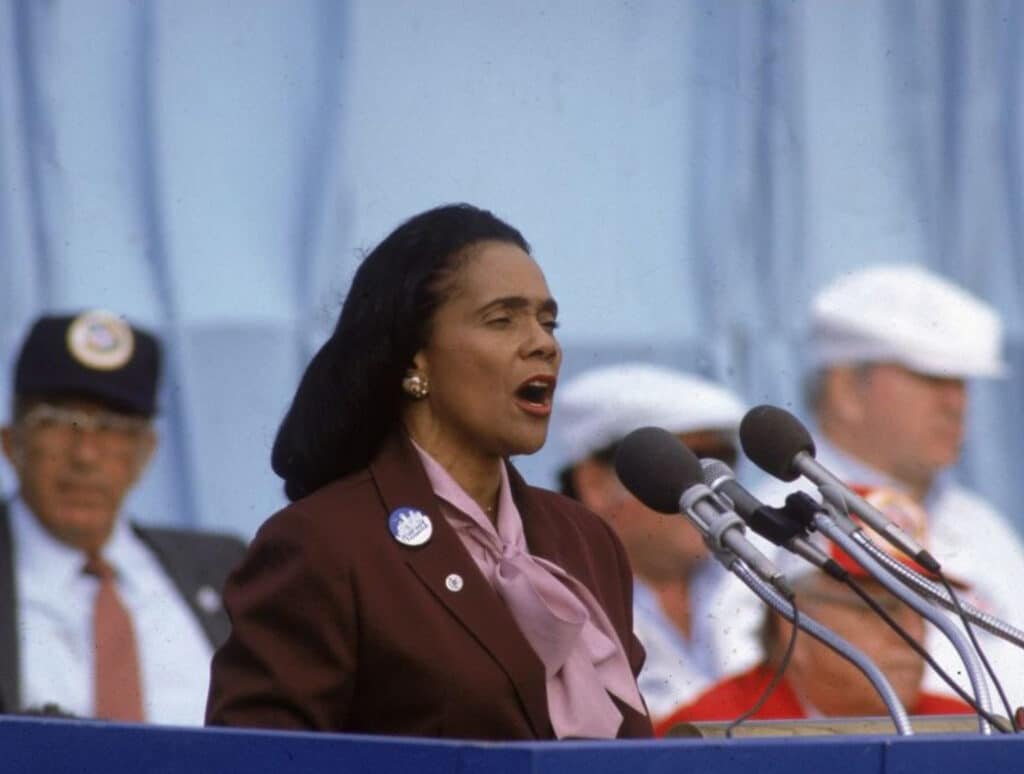The Civil Rights Movement was the fight for equality in several sectors of African-American lives in the United States. The movement took place from approximately 1954 to 1968 and tackled segregation, housing, and voting rights after the Civil War made slavery illegal. While slavery was abolished, the lives of white Americans and Black Americans had little in common. The right to live in certain neighborhoods, eat at restaurants, ride the bus, and go to schools were all segregated. Black Americans could not go to many places, and live in many places, that white Americans were able to. Without being able to vote, the concerns of Black Americans fell on deaf ears. While peaceful and nonviolent protests were how the movement fought back against inequality, protestors were met with violence. One particular incident is referred to as Bloody Sunday, where protestors were brutally attacked as they marched to Selma. Without the Civil Rights Movement, Black Americans would not have the liberties that they do today.
Women\’s Role In The Civil Rights Movement
While Dr. Martin Luther King Jr. was the leader of the Civil Rights Movement, women were also a large part of the efforts to create monumental change. \”Women, if the soul of the nation is to be saved, I believe that you must become its soul,\” Coretta Scott King said in one of her famous quotes. Women walked hand in hand for change as they organized protests, founded charitable organizations for the advancement of Black youth, and strategized plans for the future while still being disrespected, with many of their achievements silenced.
\”I truly don’t believe the younger generation understands the sacrifices my generation made, and part of that is my generation’s decision not to put those sacrifices in front of them,\” former NAACP chairman Myrlie Evers-Williams said. \”We didn’t want them to see what might happen to them. And part of it was probably battle fatigue.\”
Here are five women who impacted the Civil Rights Movement:
Rosa Parks: She is mostly known for her role in initiating the Montgomery Bus Boycott. By refusing to give up her seat for a white passenger, Parks kicked off the Civil Rights Movement when she refused to give up her seat for a white passenger in 1955. The Montgomery Bus Boycott lasted for a little over a year and was led by Rev. Martin Luther King Jr. Segregation in the bus system was eventually overruled as unconstitutional in 1956. Parks debunked the rumor that she refused to give up her seat in her 1992 memoir Rosa Parks: My Story. \”People always say that I didn’t give up my seat because I was tired,\” wrote Parks. \”but that isn’t true. I was not tired physically… No, the only tired I was, was tired of giving in.\”
Coretta Scott King: Coretta Scott King was Martin Luther King Jr.\’s wife, but she was not in her husband\’s shadow by any means. She had been interested in civil rights before she met King. She studied music at Antioch College, where she served on the NAACP chapter and Race Relations and Civil Liberties Committees. It was during her studies at the New England Conservatory in Boston that she met King and continued to fight for change. According to The Atlantic, Martin admitted that Coretta \”educated him\” about \”anti-war advocacy,\” which complimented the theme of his peaceful protests. She also did not stay quiet about how the movement often tried to bury women\’s involvement. \”Women, if the soul of the nation is to be saved, I believe that you must become its soul,\” the civil rights activist said. Even after the 1968 assignation of her husband, she continued to advocate for change by creating social programs and fighting for the rights of marginalized people.
Diane Nash: Diane Nash was a student leader at Fisk University in Nashville, Tennessee, where she participated in the student-led sit-in. She was a founding member of the SNCC (Student Nonviolent Coordinating Committee) and also was a Freedom Rider during the bus boycotts. She also worked with Martin Luther King Jr. and SCLC (Southern Christian Leadership Conference) for voting registration. The SCLC was known for holding large marches like the ones in Birmingham and Selma. She spearheaded the Selma march and walked alongside Dr. Martin Luther King Jr. For all of her life\’s work, which included the fight for equality, Black voting rights, fair housing, and the antiwar movement, she was honored with the Presidential Medal of Freedom in 2022 by President Joe Biden.
Dorothy Height: Dorothy Height was one of the organizers of the March on Washington for Jobs and Freedom. In her career, she fought for gender equality and gained great knowledge in organizing. After her studies at New York University, she became a social worker for Harlem Young Women’s Christian Association (YWCA). She was the leader of the organization for 40 years. Her organizing skills were so excellent that she was called to help by former presidents Dwight D. Eisenhower, Lyndon B. Johnson, and First Lady Eleanor Roosevelt. In 1989, she received the Citizens Medal Award from President Ronald Reagan.
Myrlie Evers-Williams: Like Coretta, Myrlie Evers was also married to a civil rights icon while also being one herself. Myrlie was married to Medgar Evans, who was assassinated in June of 1963. The couple has three children, and on the day of his murder, she was inside their home with them when he was shot and killed in the driveway by a Ku Klux Klan member. She wrote about her life, the murder of her husband, and the civil rights movement in For Us, the Living in 1967. As for Myrlie\’s impact on the Civil Rights Movement, she was a field secretary for the NAACP before she became the first woman to chair the organization, a position she held until 1998. She also campaigned for voter\’s rights and desegregation in Mississippi. And, she delivered the invocation for Former President Barack Obama\’s second inauguration.


